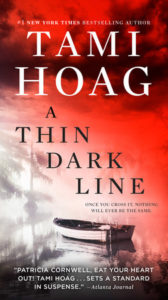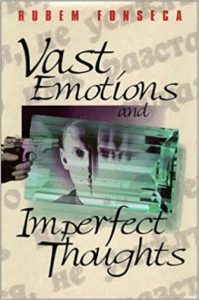Sometimes a city gets a hold on your imagination. Whether you like it or not, whether you’ve spent significant time there or hardly any at all, you can’t stop thinking about the place, letting your mind drift there during slow hours at the office or on crowded subway rides home. Anyhow that’s how it is for me and New Orleans.
My wife likes to tell people I’ll never try to run out on her because, amongst other reasons, there’s no point, she knows exactly where I’d end up—in New Orleans, shucking oysters in a seafood shack, since that’s one of the few marketable skill I possess and the only place my mind ever seems to head in times of crisis or reverie. I don’t know the city well. I’ve been a few times, seen the sites, stopped in wherever I heard music, ate and drank my fill. It wasn’t an authentic experience and I’m sure it’s riddled with cliches, but I enjoyed it immensely.
Where the city really comes alive for me is in its fiction. I read just about everything from and about New Orleans I can get my hands on, mostly crime fiction and noir, mostly of the brooding, wandering, philosophizing variety, because if there’s one thing I know about characters from New Orleans it’s that they have strong opinions about life and how it should be lived and savored. (And yes, Treme is one of my favorite shows of all-time—top 5, in fact. I’ll ride for it over The Wire any time.) My fixation on the city and its culture knows no calendar bounds, it’s a year-round thing, but I’ll admit it gets especially strong during parade season and Mardi Gras, when for a little while I get to share my preoccupation with a swath of the general population.
This year I thought I’d put down for the record a few favorites, limiting the selections to books in which a major part of the action takes place in New Orleans during Carnival. So this season, if you find yourself inclined, grab a few books, turn on WWOZ, pour yourself a nice glass of something, and pay your respects to one of the world’s great cities.

Robert Stone, A Hall of Mirrors (1967)
For me, no writer has ever supplanted Stone for capturing the seamy, scuzzy, semi-romantic ambiance of a down-at-its heels America in the late 60s right through the 70s, a disenchanted, unmoored era I can never get enough of in fiction. His 1974 novel, Dog Soldiers, is one of the great noirs ever written, but before that, his first novel came out in 1967 and offered a hopped-up, whacked-out vision of New Orleans that decade, focusing on a dj who travels to the city looking for work and ends up on a knight errant mission that also turns out to be something of a right-wing conspiracy plot. Make no mistake, this is a rough-around-the-edges novel, but it shows the potential of what Stone would become, and it tells a good lowdown New Orleans story.

James Sallis, Lew Griffin Series (1992 – 2001)
Easily one of the most brooding and existential noir series ever written, which also makes it one of the best, at least in my book. Sallis’s Lew Griffin is a poetry connoisseur with a sometimes thriving private eye business in New Orleans, where he always seems to be on the trail of another lost kid, runaway, or femme fatale. The Griffin series is in some ways an aesthetic exercise, but that doesn’t mean the mysteries aren’t masterfully crafted or fun, it’s just that Griffin is also going to do a lot of wandering the city streets asking profound questions and partaking of various earthly delights while recalling lines from Keats. That’s just how it is in his New Orleans. Any crime fan who hasn’t already experienced the magic of Griffin should stop what they’re doing, stop reading this list in fact, and get to your local bookstore or library. Ask for The Long-Legged Fly.

Bill Pronzini, Masques (1999)
Pronzini loves to straddle genres and shuffle through a slew of doubles to create a funhouse vibe in his fiction, and New Orleans during Mardi Gras is obviously a good time for those kinds of games. Here, a man visiting New Orleans for the holiday and moping over his recent divorce is confronted by a masked man accusing him of nasty, inscrutable crimes, launching a kind of half-investigation, half-hallucination that rings true for a certain experience of the city in its more fever dreamlike state.

James Lee Burke, Purple Cain Road (2000)
This is one of the darkest and most penetrating novels in one of the darkest and most penetrating series in crime fiction, so that’s saying something. Dave Robicheaux has a seemingly chance encounter with a pimp who pegs him for the son of a sex worker who was killed thirty years before. Understandably, that sends Dave into a spiral. Burke writes with a profundity and a depth of feeling seldom encountered anywhere in fiction, but his novels also serve as a spirited guide through the back alleys, barrooms, and police stations of Louisiana.

Barbara Hambly, Die Upon a Kiss (2002)
A little something for the historical fiction fans. Hambly takes us to the city circa 1835, when her detective Benjamin January, a “free man of color,” is stabbed by an assailant going after the producer behind a theater company putting on a controversial new opera adaptation of Othello. Also, it’s Mardi Gras time. There’s a lot going on, with emotions soaring about as high as you would expect of an opera-historical mystery mashup.

Greg Herren, Mardi Gras Mambo (2006)
Herren’s intensity of feeling for New Orleans burns through on every page of everything he writes, and that’s especially true for Mardi Gras Mambo, which takes place in the lead-up to the big day and involves a wild coterie of gay sleuths, cops, kingpins, local hoods, nightlife mavens, and eccentrics of all stripes and sizes. Herren’s vision of the city is madcap and noir and alive with a special kind of energy that taps into the city’s mainline.

Sara Gran, Claire DeWitt and the City of the Dead (2011)
Sara Gran’s Claire DeWitt series is one of the wildest trips you can take in contemporary crime fiction, a beautiful collision of philosophy, spirituality, esoteric crime-solving theory, meta-fiction, noir, and genuinely propulsive mystery. This one, the first in the series, explores DeWitt’s roots, which extend to Brooklyn, New Orleans, and of course the teachings of an obscure French detective named Jacques Silette. DeWitt travels to New Orleans to investigate a prosecutor’s murder, but that’s just the start of it. There’s no easy way to describe how a Gran mystery unfolds, so you’ll just have to check it out for yourself.

New Orleans Noir: The Classics, edited by Julie Smith (2016)
One installment of noir stories from New Orleans wasn’t enough, so Akashic and editor Julie Smith came back with a follow-up focusing on the “classics.” That means you’ll get a healthy portion of noir stories from across New Orleans written by the likes of Tennessee Williams and Eudora Welty, along with more modern offerings from Poppy Z. Brite, Ace Atkins, and Maurice Carlos Ruffin.

Bill Loehfelm, The Devil’s Muse (2017)
Loehfelm’s series follows Maureen Coughlin, formerly of Staten Island, New York, as she starts into her career as a New Orleans cop. In The Devil’s Muse, Coughlin gets her first taste of patrol during the big holiday, as New Orleans goes off like a firecracker and Coughlin struggles through the craziness to launch a murder investigation that seems to implicate city elders far above her pay grade. This is a complex and finely wrought portrait of police work during turbulent times, all playing out in the span of a holiday parade.

Tami Hoag, A Thin Dark Line (2017)
Another dark mystery set in the days leading up to Mardi Gras. (This one’s a bit of an outlier for the list—Hoag’s series is set in “Bayou Breaux,” a fictional stand-in Breaux Bridge, a small town east of Lafayette, in bayou country. So readers in search of that New Orleans flavor will have to go elsewhere. But I couldn’t resist including.) There’s something particularly sinister about that period of anticipation and sometimes dread. Emotions are heightened, people are coming together, there’s a special charge of electricity in the air. And in A Thin Dark Line there’s also a killer on the loose, thanks to a technicality. This is a truly horrifying book, one that’ll haunt you a long while afterwards.

Non New Orleans Carnival Bonus: Rubem Fonseca, Vast Emotions and Imperfect Thoughts (1988)
One more recommendation, since I take every opportunity at hand to recommend the work of Rubem Fonseca, Brazil’s answer to…well I don’t know quite who to compare him to. His work is heady and funny and searching and sometimes mystical but also grounded in a deep appreciation for the traditions of crime fiction. Imagine Chandler’s Marlowe run through a wash of Roberto Bolaño, translated by Thomas Pynchon. This one is set in Rio and begins with a late-night appearance by a Carnival dancer, and includes quite a lot of parade prep. Enjoy.

















